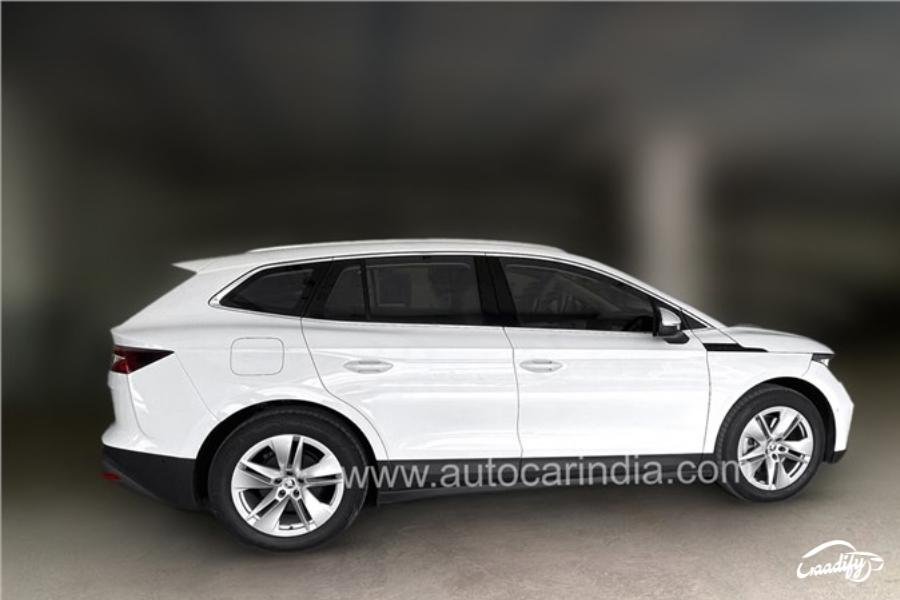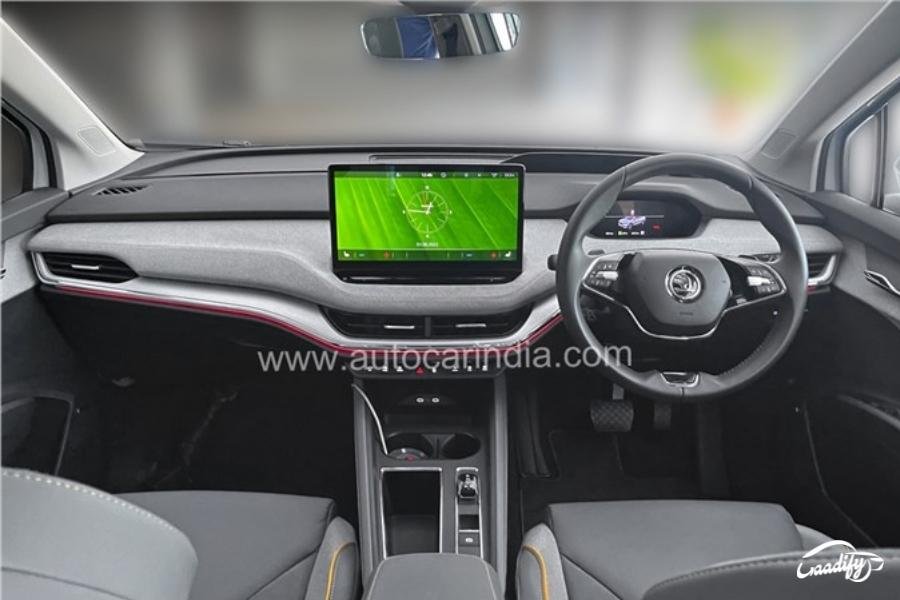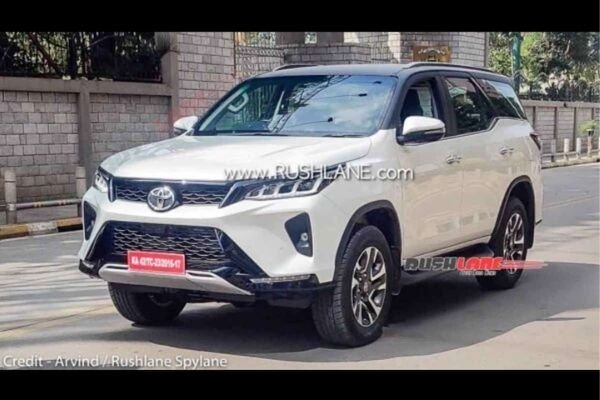- Likely to be launched in early 2023.
- Could be brought via the CBU route.
- Likely to be available in a sole 80x variant in India that offers 460km of range on a single charge.
The Skoda Enyaq iV electric SUV has recently been spotted testing on Indian roads amid speculations about its launch in the country. It is expected to arrive in the first half of 2023 as a fully imported model.
As of now, no official details have been revealed by the brand about its India-bound model, but the recently spied testing model was Enyaq iV 80x variant which comes equipped with a 77kWh Li-ion battery pack, linked to a 265PS dual-motor setup, giving it an AWD configuration. This range-topping variant of the Skoda Enyaq iV is claimed to offer a range of 460km on a single charge. As for charging capabilities, the electrified SUV supports up to 125kW DC fast charging that can juice it up from 5 to 80 percent in just 38 minutes.

Desing-wise, the Skoda Enyaq iV flaunts a crossover-like stance, featuring sharp character lines, a sloping roofline, and an upright tailgate section. Up front, it gets an illuminated grille with a crystal face flanked by LED matrix headlamps integrating daytime running lamps (DRLs). At the rear, the Enyaq iV sports angular LED tail lamps, a blacked-out bumper, and the signature ‘SKODA’ lettering on the trunk lid.
Measuring 4,648mm in length, the Enyaq iV underpins Volkswagen Group’s MEB-born electric platform, which also underpins the likes of the Volkswagen ID4 and Audi Q4 e-tron.

Inside, the electric SUV gets a minimalist dashboard design with 13-inch floating touchscreen infotainment taking the centre stage. It also uses recycled materials for the interior trim and seat upholstery. The other notable bits include a two-spoke steering wheel, a digital instruments screen, ambient lighting, an augmented reality head-up display (HUD), and aircraft-style toggle switches under the central aircon vents.


